Xoi Tri village in Nam Dinh province preserves tradition of glass blowing
(VOVWORLD) - Residents of Xoi Tri village in Nam Dinh province continue to use the ancient craft of glass-blowing to create glasses and vases by making use of rudimentary tools and techniques handed down from previous generations.
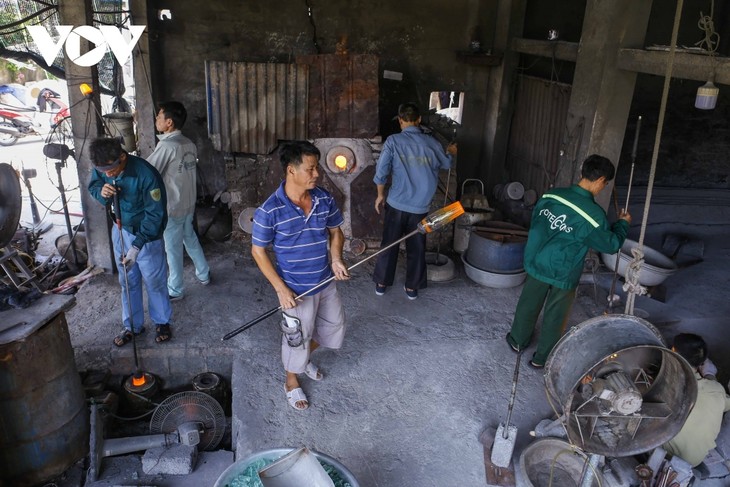 |
| Xoi Tri village is located in Nam Dinh province and is a famous place for traditional glass blowing work techniques as locals constantly make fire, thereby creating glass products. |
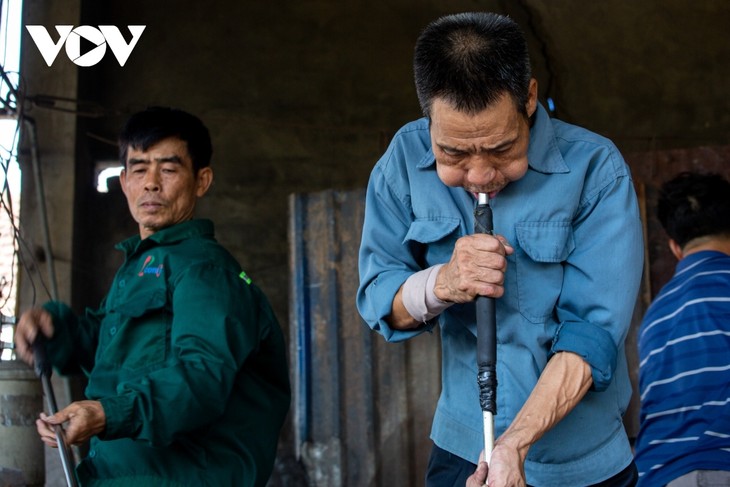 |
| Tran Van Duyen, 50, who has around 20 years of experience in glass making, shares that the village only has three glass kilns today. |
 |
| Every day each kiln consumes 700kg to 800kg of waste glass and makes approximately 1,000 products. |
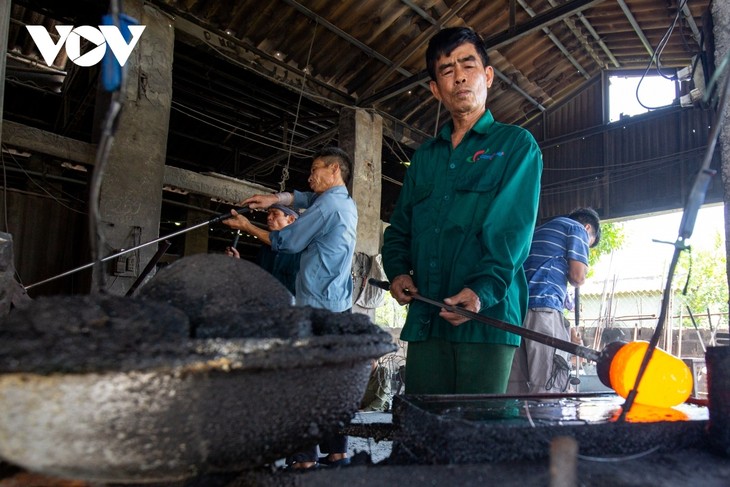 |
| As a means of creating a glass product, a multi-step process must be performed. The glass pieces are guaranteed not to stain and are classified by different colours such as blue and white. |
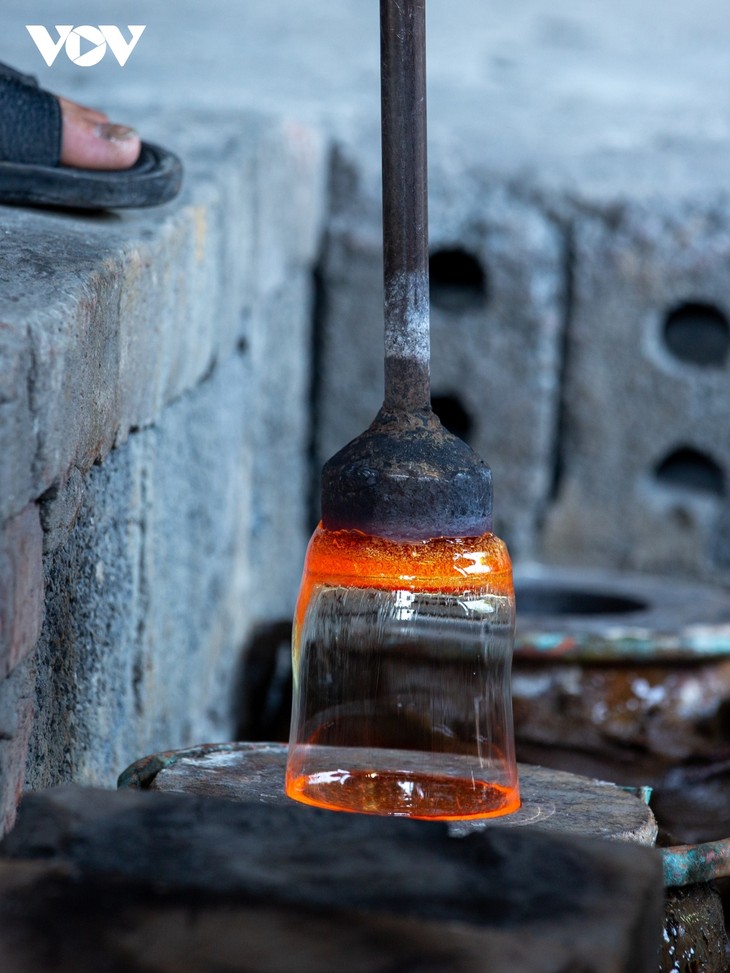 |
| Depending on the requirements of each product, the production process changes, including in the blowing, pressing, pulling, and rolling stages. However, the traditional processing method of the village, which is blowing, is still used by many local workers. |
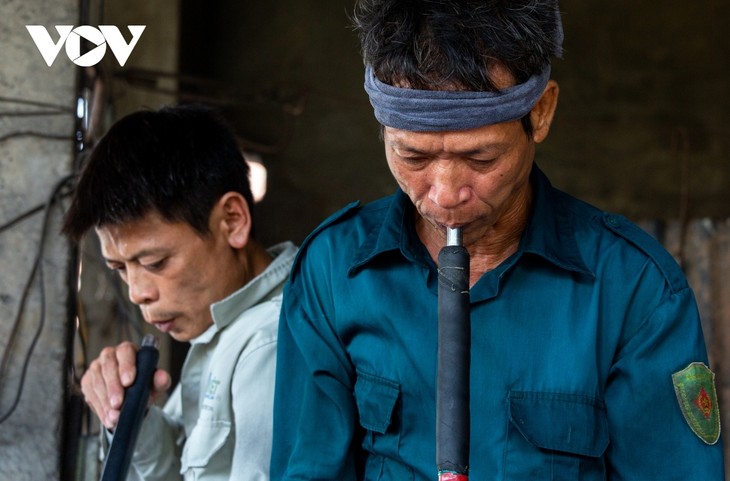 |
| The glass-blowing technique plays a crucial role in creating unique items. Craftsmen must regulate their breathing to ensure it is smooth and suitable for each product. Even skilled workers must hold their breath as they work hard to achieve the desired shape. |
 |
| While blowing, the craftsman must constantly shape and seek to adjust the thickness. |
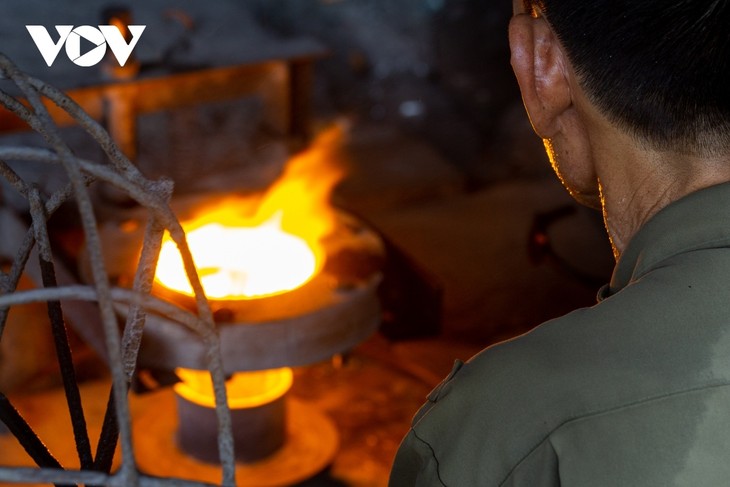 |
| Local people work close to glass-melting kilns where temperatures can rise up to nearly 2,000 degrees Celsius. |
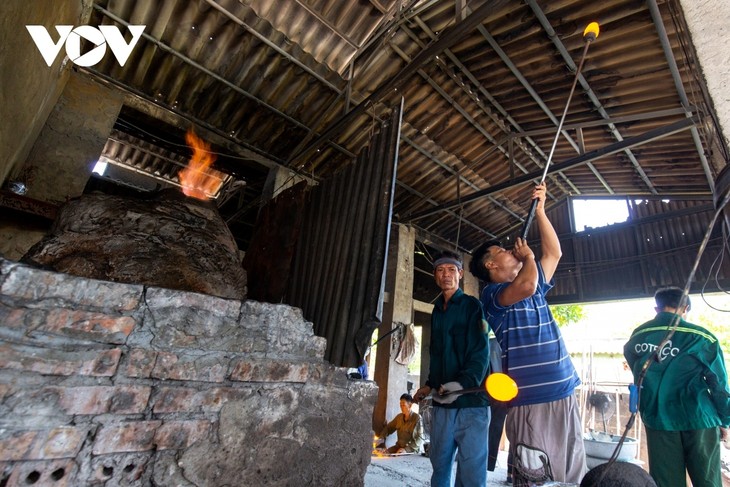 |
| When the outside temperature reaches up to 38 degrees Celsius, it’s 50 degrees Celsius inside the workshop. |
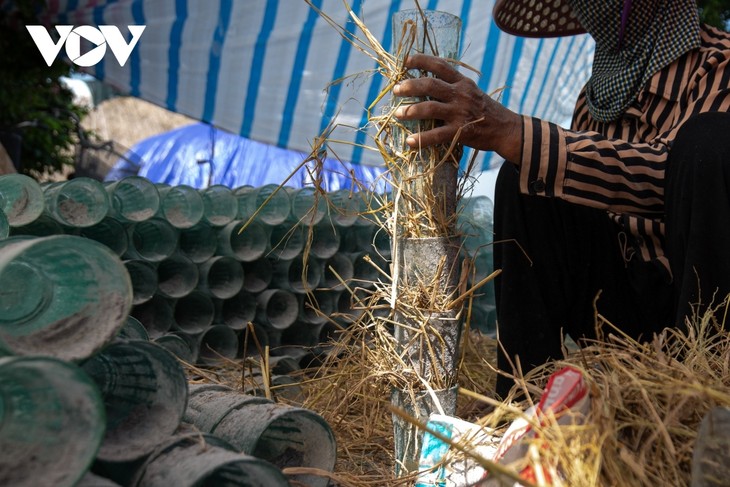 |
| The workshop receives plenty of orders from Bia Hoi (craft beer) shops. |
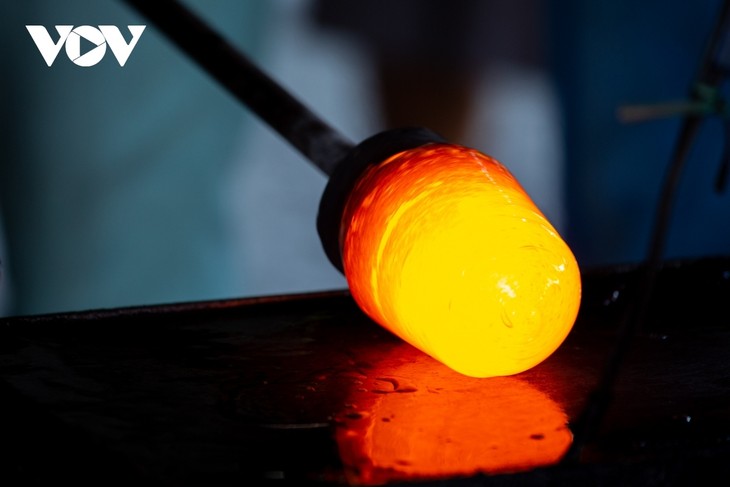 |
| Locals also make glass products such as medicine tubes, glass bulbs, or any other glass objects. All of the products have high durability, transparency, uniformity, and safety. |